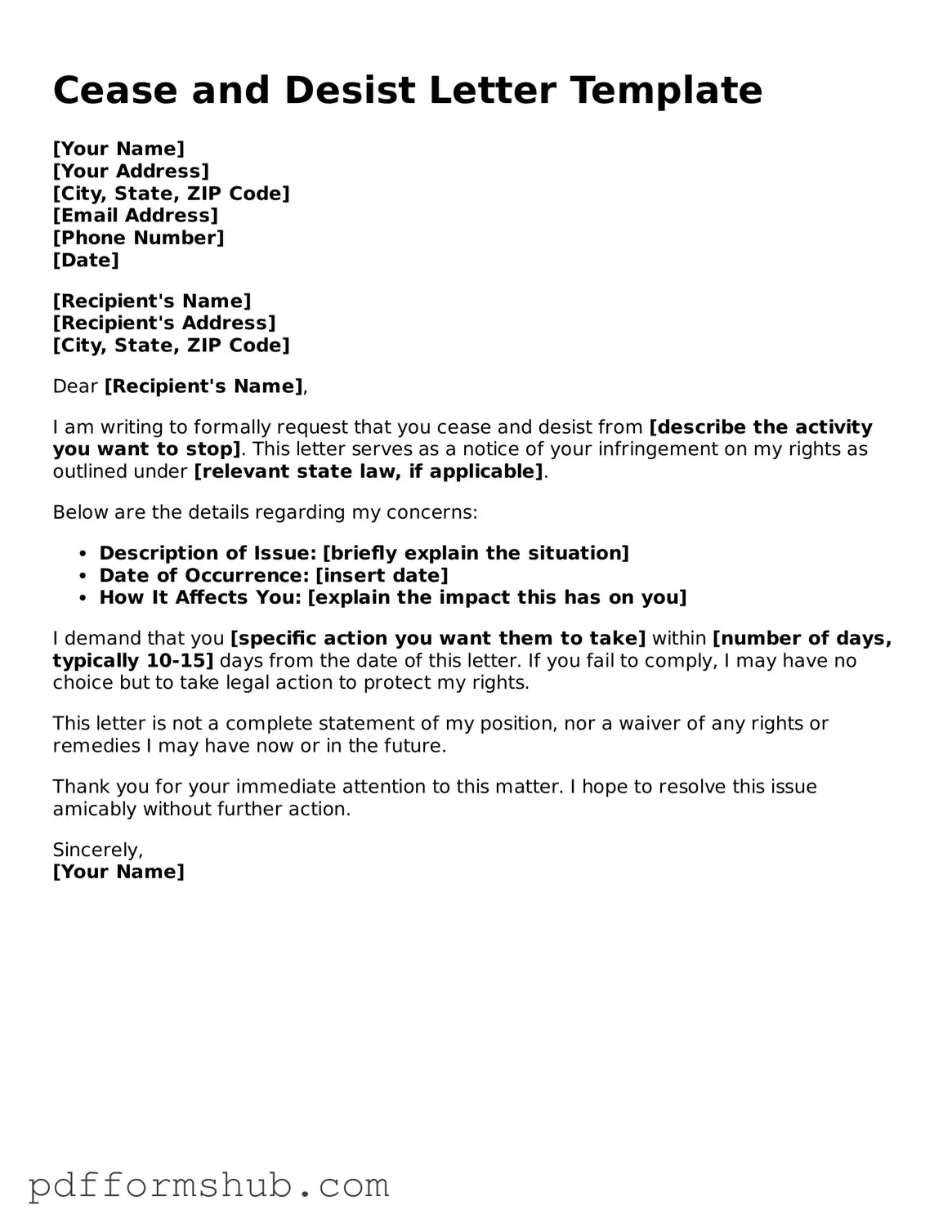A Cease and Desist Letter is a crucial tool for individuals and businesses seeking to address perceived legal violations or disputes. This written communication serves as a formal request for the recipient to halt specific actions that are believed to infringe on the sender's rights. Commonly, these letters arise in contexts such as intellectual property disputes, harassment claims, or breach of contract situations. A well-structured Cease and Desist Letter typically includes essential components such as the sender's and recipient's contact information, a clear statement of the objectionable behavior, and a demand for it to stop. Additionally, it often outlines the legal basis for the request and may specify a timeline for compliance. By providing a clear and direct message, this letter not only seeks to resolve issues amicably but also lays the groundwork for potential legal action if the demands are not met. Understanding the importance and structure of a Cease and Desist Letter can empower individuals and businesses to protect their rights effectively.
